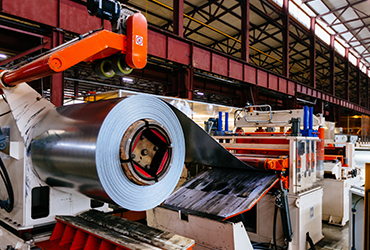



So, what makes stainless steel so great as opposed to other metals? Well, everything. It is more corrosion resistant (doesn’t rust), has higher heat and oxidation resistance than other metals, and has higher strength at both room and high temperatures than alternative options. In addition to these characteristics, the unique properties of stainless steel, its appearance, and its low need for maintenance all make it a strong choice for many applications.
Let’s investigate corrosion resistance a little more though. Why does it have corrosion resistance? Why does stainless steel not rust? The short answer: Chromium. Let’s look back at our equation up top. Iron, being the base metal in most stainless steel, usually rusts relatively quickly when exposed to oxygen on its lonesome. What separates stainless from carbon steel or other types of steel, is the chromium oxide layer that is added to this base metal. This layer works to form a passive film which greatly increases the corrosion resistance and, in turn, minimizes rust. As one might guess, increasing the amount of chromium increases the resistance to corrosion.
Stainless Steel has many different alloying options and the different metallurgy of each alloy results in different families of stainless steel and different grades within those families. There are 5 main families of stainless steel:
Within these families, there are different grades of stainless. Adding different elements changes the chemistry of each grade and changes the factors of that grade which can affect the application of the material. For example, in the case of formability vs. weldability.